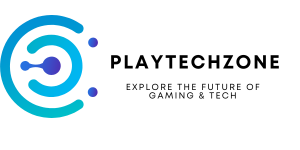By: Peter, Tech Expert at PlayTechZone.com
The world of filmmaking is on the verge of a radical transformation. No longer confined to expensive equipment and laborious post-production, creators are harnessing the power of artificial intelligence to craft entire films. This burgeoning field of AI-generated video is not just changing how movies are made – it’s pushing the boundaries of artistic expression and challenging our very perception of reality.
This isn’t just about flashy special effects; it’s about democratizing the filmmaking process and opening doors for a new wave of storytellers. Imagine crafting breathtaking visuals, complex scenes, and even entire movies with just a few clicks. This is the promise of AI video generation, and it’s already making waves in the industry.
A New Era of Surreal Cinema
One of the most striking examples of this new wave is “The Frost,” a 12-minute film produced by Waymark, a Detroit-based video creation company. What makes “The Frost” so unique? Every single shot is generated by OpenAI’s DALL-E 2, an AI image-making model.
[Embed Trailer for “The Frost” if available]
The result is a film that’s both captivating and unsettling. The visuals, while stunning, possess a distinct “artificiality” – a telltale sign of their AI origins. This isn’t necessarily a drawback; in fact, it’s this very quality that lends “The Frost” its eerie, dreamlike atmosphere.
Beyond “The Frost”: A Flourishing Landscape of AI-Generated Films
“The Frost” is just the tip of the iceberg. A slew of AI-generated short films have premiered in recent months, each showcasing the diverse capabilities of this technology. From the surreal, plastic-wrapped seascapes of “PLSTC” to the nostalgic, AI-extended family photos of “Expanded Childhood,” these films demonstrate the potential of AI to evoke a wide range of emotions and aesthetics.
The Tech Behind the Magic: A Glimpse into AI Video Generation
The creation of AI-generated video relies on a complex interplay of cutting-edge technologies:
- Image-Making Models: AI models like DALL-E 2 and Midjourney form the backbone of this process. These models are trained on massive datasets of images and text, learning to generate new images from textual descriptions (also known as “prompts”).
- Video Generation Models: Tools like Runway’s Gen-2 take AI image generation a step further, producing short video clips from text prompts.
- Animation Tools: Once the still images are generated, AI-powered animation tools like D-ID breathe life into them, creating realistic (or intentionally unrealistic) movements.
Democratizing Filmmaking: How AI is Leveling the Playing Field
One of the most exciting aspects of AI video generation is its potential to democratize filmmaking. Traditionally, creating high-quality video content required significant financial resources and technical expertise. AI tools are changing that, making it possible for anyone with a story to tell to bring their vision to life.
Beyond the Silver Screen: AI Video Generation in Advertising and Beyond
While artists and filmmakers are at the forefront of this revolution, the advertising industry is also taking notice. Companies like Waymark are already leveraging AI to create customized video ads for businesses of all sizes. Imagine generating a polished commercial for your local bakery with just a few clicks – that’s the power of AI at work.
The Challenges and Ethical Considerations of AI-Generated Video
As with any transformative technology, AI video generation comes with its own set of challenges and ethical considerations:
- Copyright Issues: The use of copyrighted material in the training datasets of AI models has sparked debate and legal challenges.
- Job Displacement: Concerns about AI replacing human jobs in the film and advertising industries are understandable and require careful consideration.
- Misinformation and Deepfakes: The potential for misuse of this technology to create misleading or harmful content is a serious concern.
The Future of Filmmaking: A Collaborative Landscape
Despite these challenges, the future of AI-generated video is bright. Rather than replacing human creativity, AI tools are poised to become powerful collaborators, augmenting the filmmaking process and unlocking new possibilities.
Imagine directors using AI to rapidly prototype different shots, experiment with surreal visuals, or even generate entire scenes on the fly. This collaborative approach will likely lead to a new wave of hybrid films, seamlessly blending human creativity with AI ingenuity.
Conclusion: Embracing the Evolving Landscape of Filmmaking
The emergence of AI-generated video marks a pivotal moment in the evolution of filmmaking. As these tools continue to evolve, we can expect to see even more innovative and thought-provoking content. While the technology is still in its early stages, one thing is clear: AI is poised to reshape the cinematic landscape as we know it.
Further Exploration:
- [Link to an article about the ethics of AI in art creation]
- [Link to a resource on using AI for video editing]
- [Link to a website showcasing examples of AI-generated art]
